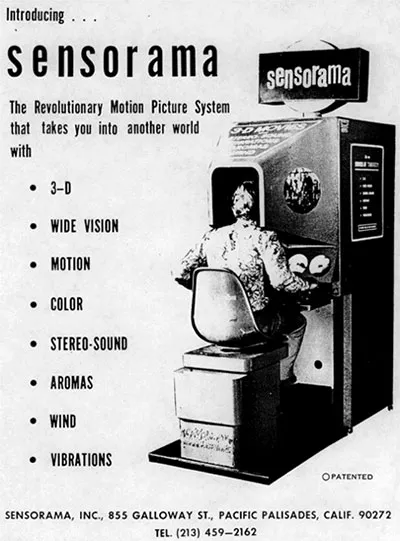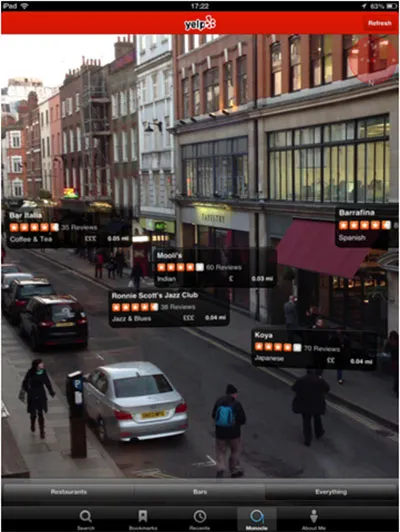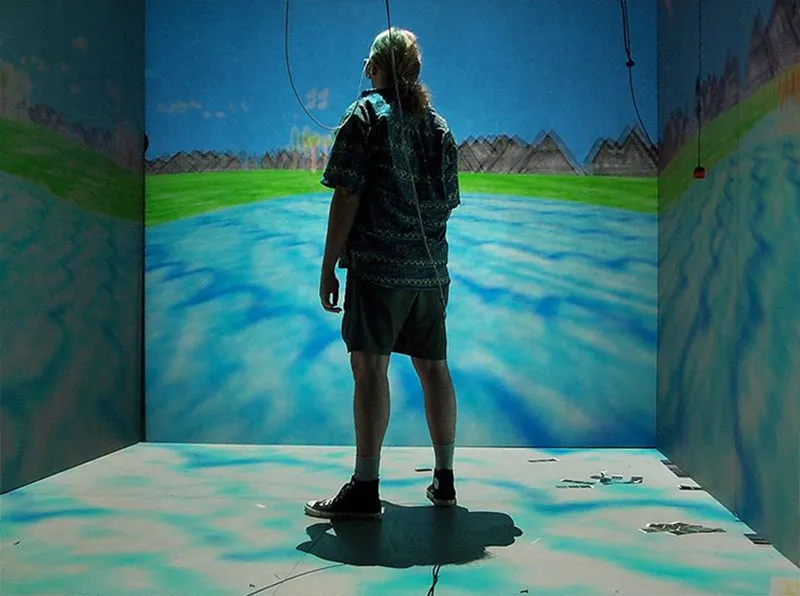Virtual Reality 101: An Introduction to VR
I first experienced virtual reality (VR) in May 2015. I downloaded a photosphere of the Martian surface, launched a 360 degree photo viewer app, popped my phone into a weird little headset made out of cardboard, and then wore it. When I looked around, slowly scanning the horizon, I could see the hilly, arid terrain of Mars all around me. I looked down and saw myself standing on the Curiosity rover. I looked up and saw the stars of the Milky Way shining in the clearest night sky I had ever seen. I was blown away. For the minute or so when I had worn the headset, I genuinely believed I was on Mars. Such is the power of VR. It can transport you to other worlds in a split second. Once the initial awe had died down, I tried to find out as much as I could about VR.

[In case you’ve managed to miss out on all the VR hype, an article on this site from earlier this year offers a pretty good overview – Will 2016 be the year of Virtual Reality?]
As it turned out, despite the massive volume of VR coverage available online, I found it incredibly hard to find the answers to some fundamental questions about the technology. I had drawn up a basic list of questions:
- What exactly is VR? How is it different from augmented reality (AR)? And what’s this new “Mixed Reality” term that’s popped up all of a sudden?
- If VR is so awesome, why isn’t it already a part of my life? Why will 2016 be the year of VR?
- Why are there so many headsets out there? Why would I buy the Samsung Gear VR headset for Rs 8,000 when I could buy the Google Cardboard for Rs 400?
- How do I build/develop for VR?
- Why aren’t there any famous Indian firms in this space yet?
Most online articles proclaim VR to be the harbinger of a new technological revolution ‑ to pave the way for AR and mixed reality to enter the mainstream and change the way we interact with digital devices forever. Then, they inevitably go on to drop some references to the Matrix, while discussing the metaverse, holograms, wars between Facebook and Google, the Oculus Rift, the HTC Vive, Sony, the Gear VR and Project Daydream, the crazy amounts of funding some secretive startups without a product is getting and its applications in medicine, architecture and trauma therapy and other VR- and AR-related information … making it incredibly hard to find answers to my basic questions.
Eventually, I managed to figure out the answers and have been following the industry quite closely for the last seven to eight months. Judging by the rate at which the VR industry is currently growing, and the sheer excitement a good VR experience generates in the user, I am willing to bet that there will be many more like me who will set out to find out more about VR in the immediate future. The sole purpose of this article is to offer a starting point to these people.
So, let’s address that list of questions I drew up:
- What exactly is VR and why is it such a big deal? How is it different from AR? And what’s this new “Mixed Reality” term that’s popped up all of a sudden?
Working together, our senses of sight, hearing, smell, taste and touch help us understand the world around us, and understand the effect our actions make on this world. Substituting the input our senses receive with computer-created information, or simulations, tricks the brain into believing that we are in a completely different environment. The end result is what we call a “Virtual Reality”.

Figure 1: The Sensorama, invented in 1955, claims to be the world's first virtual reality device. As you can see from the picture, it simulated sight, smell, sound and touch.
In the context of present day VR head-mounted displays (HMDs; these are those box-shaped gadgets you wear on your head), it is predominantly our senses of sight and hearing that are being fed computer simulated data. Either through 3D modelled environments or 360 degree recordings of real-world locations, VR HMDs help transport the user to an entirely new location, completely blocking out the real world in the process. The more realistic the images and audio fed to the user, the more convincing is the illusion – the more the user feels like she is actually “immersed” or “present” in this new world. Looking around, the user has a genuine sense of scale of her new surroundings.
In the Jurassic World VR demo on the Samsung Gear VR ‑ as the dinosaur stands up, you truly understand how small you are compared to it. When it bends down and breathes into your face, your lizard brain coils back in fright. These are sensations that were impossible to experience before the advent of VR.
Of course, once you realise the true potential of VR, your mind begins to race with the possibilities that have now opened up. You imagine its applications in tourism, education, gaming, porn, social networks, etc. How cool would it be to study about the Dandi March, while actually walking alongside Gandhi in a simulation of Sabarmati?
The real power of VR, though, is not in its ability to mimic reality, but in helping you accomplish feats impossible in the real world. With VR, you could lift buildings, defy physics, travel to another planet, or drive an Audi on the moon. I’m not making this stuff up, these are experiences that are already on the market. Imagine studying about the Solar System while travelling from planet to planet.
The VR industry has been generating such content for close to four years now. If this excites you, do watch this keynote speech from the Vision VR/AR summit earlier this year to see how far VR has come. If you are also interested in knowing how they built all this, then you should watch this talk by John Carmack (CTO, Oculus), at the Oculus Connect 2 conference, late last year.
VR, in its current form, is not perfect, but it is continuously getting better. In addition to key breakthroughs made in simulating sight and sound, there is considerable progress being made in simulating touch, smell, and taste as well. There’s also a lot of effort being put into reducing the size of the headset. This lecture by Michael Abrash, Chief Scientist at Oculus, covers these aspects in detail.
Augmented reality and mixed reality
If VR is in the business of creating a whole new world and transporting the user to them, AR is the phenomenon of supplementing the real world around us with computer-generated data. There are already a bunch of AR apps you can download on your smartphone that create digital overlays on the world around you.

Figure 2: The Yelp Monocle, which uses digital overlays to display Yelp-listed locations around you, is a great example of an AR app.
Now, let’s go a step further with these digital overlays, and imbue them with the ability to collide with real-world objects, to react to changes in real world lighting, and to interact and integrate seamlessly with the real world around us. We’ve just created a mixed reality.
In an ideal mixed reality, one wouldn’t be able to tell the difference between a virtual object and a real-world physical object. Take a look at Magic Leap’s concept video to understand the true potential of mixed reality. True mixed reality is still a while off, maybe two or three years away. In a major milestone for mixed reality, the Microsoft Hololens, a device capable of both AR and mixed reality, released their first developer kit earlier this year.
TL;DR: VR transports you to another location entirely, creating a whole new world around you. AR augments the world around you with digital overlays. Mixed reality is AR and VR on steroids, creating a better version of the world around you by introducing realistic virtual objects into it.
- If VR is so awesome, why isn’t it already a part of my life? Why is 2016 the year of VR?
VR has a long, complicated history. It witnessed a false dawn in the late ‘80s, then saw a prolonged lull as enthusiasts waited for hardware to catch up to the wild ideas being formulated. Most VR applications in the late ‘90s and early 2000s were targeted at enterprises and priced absurdly high. The Cave Automatic Virtual Environment (CAVE) is the most famous example of enterprise VR. CAVE was a room with screens for walls. Once the user donned 3D glasses and entered CAVE, it enabled him to see floating 3D models. He could walk around and manipulate virtual objects, and assemble bigger models from smaller ones. It was priced at hundreds of thousands of dollars, and used by clients like Disney Imagineering to design some of the rides at Disneyland and by some premier automotive firms to assemble their cars.

Figure 3: CAVE
Of course, all this changed when Palmer Luckey created the first prototype of the Oculus Rift HMD in his basement in 2011. Up until that point, VR headsets were too heavy, too expensive and offered a poor experience. It was restricted to defence and enterprise applications.
The major problems were caused by the screen. They were low resolution and bulky. Taking advantage of the hardware developed for smartphones, specifically lightweight, high-resolution LED screens, Palmer Luckey was able to engineer a lightweight headset that convinced Mark Zuckerberg about the potential of consumer VR, leading Facebook to acquire Oculus for a reported $2 billion in 2014.
This is a highly condensed history of Oculus, of course. I strongly suggest you read this article, if Oculus’ history intrigues you.
Facebook, HTC, Sony and Google have announced VR HMDs targeted at mainstream consumers. These tech giants firmly believe that there will soon be a VR headset in each household. They are aggressively on-boarding developers to develop applications for their respective platforms. There are thousands of VR experiences out there at the moment and several more are being created as we speak. To borrow an oft used analogy, the VR industry is currently where the smartphone industry was in early 2007, when the first iPhone was launched. If 2007 is considered the year that smartphones truly took off, then 2016 could very justifiably be the year of VR.
TL;DR: The technology required to create a convincing and affordable VR simply wasn’t available till now.
The remaining questions will be addressed in a continuation of this post. If you are hungry for more news, I strongly suggest you watch the lectures and read the articles mentioned in the post so far. They are delivered/written by people far more qualified than I and are extremely informative.
I realise it’s a pain to scroll up and find those click on those blue links mentioned above, so I’m going to list them here again:
- The Keynote speech from the Vision VR/AR summit
- John Carmack’s (CTO, Oculus) talk from the Oculus Connect 2 conference
- Michael Abrash’s (Chief Scientist, Oculus) talk on research efforts in VR from Oculus Connect 2 conference
- Magic Leap’s Mixed Reality concept video
- An article on Palmer Luckey and the history of Oculus
If you do come across any other links containing quality information about VR, please do post them in the comments below.
Also read - Part -2 (Different types of VR headsets) and Part - 3 (Building for VR) of the series
(Disclaimer: The views and opinions expressed in this article are those of the author and do not necessarily reflect the views of YourStory.)







